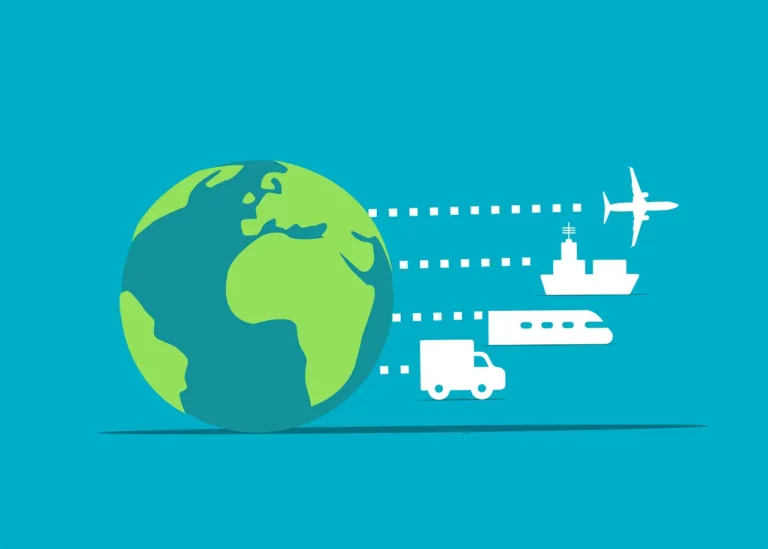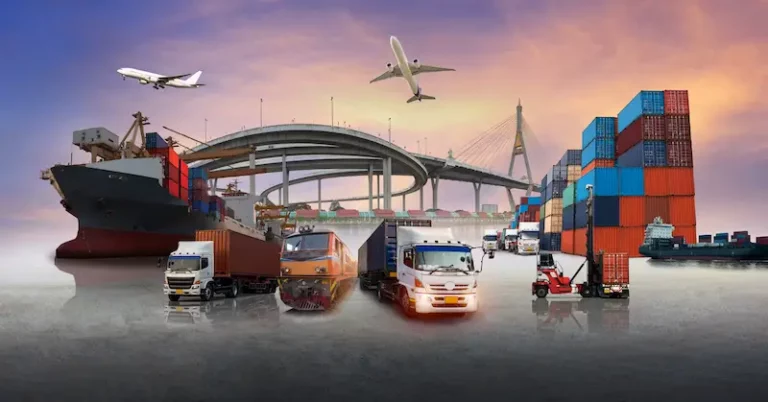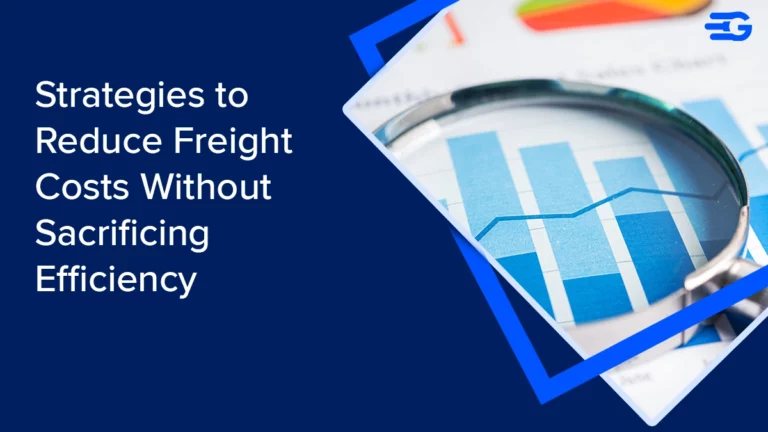Introduction to Freight Payments
Introduction to Freight Payments
In the fast-paced world of logistics, where the smooth flow of goods takes center stage, a critical but often less-talked-about element ensures everything runs like clockwork: freight payments. It’s the quiet hum behind the scenes, the invisible handshake that keeps the global trade engine purring.
By understanding the intricacies of freight payments, logistics staff, freight brokers, CFOs, and business owners gain a powerful tool to optimize their financial management and streamline supply chain operations. This comprehensive guide dives deep into the world of freight payments, unpacking the essential processes, terminology, and best practices. We’ll also explore innovative solutions that are revolutionizing the way businesses handle their freight payments.
The Freight Payment Process Explained
While the world focuses on the physical movement of goods, freight payments handle the crucial financial scenario. It’s a multi-step process ensuring everything runs smoothly, from initial quotes to final settlements.
Key Components of Freight Payments
Quotation and Booking: The shippers get price proposals from carriers depending on the data provided, including the shipment weight, origin, destination, and type of service (e.g., fast, less-truck-load (LTL), full-truck-load (FTL)). In the next step of the process, a service provision of offering suitable terms and conditions for a particular transport is chosen and booking is confirmed primarily through digital ways or a freight broker who performs the role of a mediator between the shipper and the carrier.
Shipment and Documentation: The forwarded cargoes to the carrier at the destination per the instructions. Required documents, for example, contract copies, are received. The BOL is indeed a core legal document that is either saved by the drawer as proof of shipment or used as a contract of carriage on which operator obligations are noted and title during the process of transportation is transferred.
Freight Billing: When arrival at the place of origin is accomplished, the carrier submits in the shipment document the freight bill which is the express report of details about the consignment, agreed rates which are based on the quote and service type, and the additional charges occurring during the process of carriage. In addition to the regular transportation cost, such charges can also include fees for services beyond standard transportation, such as storage for longer than the normal limit (if the shipper delays unloading), equipment for air transportation (if special equipment is needed for loading/unloading), or charges for excess fuel consumption when long-haul transport is involved.
Freight Audit and Payment: Freight forwarders with an eagle eye, verify the freight bills. (freight audit) It is here that the shipper will match the BOL with the waybill and make verification of the quotients as agreed upon and authorization of accessorial charges alongside as well. Carriers who try to manipulate the system are pointed out before money is transferred. Freight audit software usurps the manual process to great accustom, simplifying the audit and detecting errors if any.
Settlement: With the dispatch confirmation of the freight bill, the payment is made to the carrier according to the agreed method of payment. These payment methods may include a check, electronic fund transfer via an ACH (Automated Clearing House), or a credit card. The competition has relegated checks now as the transactions require faster processing speeds and improved visibility hence the necessity for electronic payments.
Understanding Freight Bills and Audits
Freight bills form part of the freight payment administration since they have the most important details such as shipment descriptions including weight, dimensions, and commodity type, charges which are reported under each of transportation rate and accessorial charges, and lastly payment terms. Freight bills are the cornerstone of efficient logistics management, serving as the primary documentation for the movement of goods. Beyond their role in payment administration, they also serve as critical records for tracking shipments, facilitating communication between parties involved, and resolving disputes. With accurate and comprehensive information on shipment descriptions, charges, and payment terms, freight bills ensure transparency and accountability throughout the supply chain. Moreover, they provide valuable data for performance analysis and strategic decision-making. Thus, beyond their immediate financial implications, freight bills play a vital role in optimizing operations and enhancing overall efficiency.
Freight audits preserve the validity of these invoices by checking whatever is charged against agreed-upon rates and locating any balances. This rigorous audit ensures redress of overpayments, promotes cost savings, and upholds financial integrity, at the same time. Some of the most widespread mistakes noticed during audits are wrong classification (by assessing the wrong freight class a shipment may be extremely expensive), weight or dimension discrepancies, and unauthorized accessorial charges.
Types of Freight Payment Solutions
The world of freight payments isn’t a one-size-fits-all situation. Businesses of all sizes have unique needs, and the good news is there’s a variety of solutions available. Let’s explore both traditional and innovative approaches to freight payments, to help you find the perfect fit for your company.
Traditional vs. Digital Solutions
Traditional methods: Checks on paper, ACH transfers, and credit cards have been a mainstay of freight payments all through. On the other hand, these procedures are likely to face delays and incorrect data that can be caused by manual input and reconciliation difficulties connected with paper documents. On top of that, paper checks can take a few business days to process which delays carriers’ cash flow.
Digital solutions: Emerging technologies are as refreshing as a fresh breeze. Online payment platforms facilitate the process, perform automated tasks such as invoicing and reconciliation, and give real-time tracking for all transactions. Not only does it reduce the mistakes but also improves the cash flow management by tracking the payments and optimizing the settlement times.
Freight Factoring Services
Among the business enterprises that have remote cash flow management as their weakness, freight factoring is the only remedy. Freight factor is a payment method under which, a certain percentage (generally 70-80%) of the invoice value is forwarded in advance, by the factor who should collect the carrier’s payment. However, while freight factoring offers a lifeline for businesses struggling with cash flow management, it’s essential to weigh its benefits against its costs. Factors typically charge fees for their services, which can eat into the profitability of a business. Additionally, businesses must consider the potential impact on customer relationships, as factoring arrangements may involve third-party communication with clients regarding payment. Despite these considerations, for many enterprises grappling with cash flow challenges, the ability to access immediate funds through freight factoring can be a crucial tool for sustaining operations and fueling growth. Thus, while it may not be a perfect solution, it can provide much-needed relief in times of financial strain.
It becomes possible to apply for loans aged just a few days thereby eliminating the situation when business owners often have to wait for a long period to get paid by slow customers or carriers dealing on extended payment terms. Nevertheless, freight factoring just like all the other financial facilities has some charges that can put the profitability on the line.
Challenges in Freight Payments
Despite its importance, freight payments are not without their challenges. Here’s a deeper dive into common issues and solutions:
Common Payment Disputes and Resolutions:
Discrepancies in weight, dimensions, or service: These discrepancies can lead to disagreements between shippers and carriers. Careful documentation (ensuring accurate weight and dimension measurements are recorded on the BOL) and clear communication during the quoting process (confirming the service type and associated rates) are key to preventing such disputes.
Classification errors: Incorrect freight classification can result in significant cost differences. Understanding freight classes and their associated rates is crucial. Freight classifications are based on factors like density, handling requirements, and value. Businesses can leverage resources from the National Motor Freight Traffic Association (NMFTA) to ensure proper classification.
Late payments: Payment delays can strain relationships with carriers. Implementing efficient payment processes (utilizing digital payment platforms for faster processing times) and clear communication regarding payment terms (establishing and adhering to agreed-upon due dates) ensure timely settlements and foster positive carrier relationships.
The Importance of Accurate Freight Billing
Accurate freight billing is the foundation of smooth freight payments. Here are some best practices to ensure accuracy, along with the potential consequences of errors:
Clearly define service expectations: Commit to a list of the agreements regarding service levels (e.g., priority delivery, special delivery time with surcharges) as well as detailed charges that are spelled out in the contract or quote. That’s done so that the freight forwarder specialists may not argue over the accessorial costs they did not know.
Maintain accurate shipment information: Triple-check the load particulars such as weight, dimensions, and forwarding code before the BOL is signed. False information is likely to result in overestimates, which encourage inaccurate charging.
Standardize freight classification: Ensure there is a uniform implementation of freight classification within your company. Will a freight training system or classification software be employed to make certain that all the staff members have a firm grasp of the classification protocols?
Shippers, Bills, and carriers. Incorrect freight can cause many big troubles. Shippers will face a conundrum in wagering underpayments for ost services not tendered or wrongly allocated freight. Operators of the networks of a certain revenue agent may never receive payment because of occasional temples approving their receipt because of misunderstanding of the real figures of the rendered charges.
Best Practices in Managing Freight Payments
Leveraging Technology for Efficiency
Technologies are in essence a driving force aimed at achieving better freight payments. For instance, automation, visibility, and simplification of procedures are offered by platforms like GoComet through a suite of features. Here’s a deeper exploration of how technology empowers efficient freight payment management:
Automated Workflows: Make invoice processing quick and error-free with automated workflow systems and eliminate the need for manual data entry. Such autonomy in a workflow can in turn perform duties of capturing shipment details from BOL, load freight bill attributes, and route invoices into the approval section.
Real-time Tracking: The freight bills and payment status can be viewed in real-time online, this will enable the cash flow to be managed better due to quick and reliable visibility. Instant dashboards offer instantaneous analytics on upcoming payments, processing timelines, and financial moves, as a result, companies get the opportunity to make decisions as regards their finances.
Integrated Solutions: Integrate your freight payment system with your existing TMS or ERP platform in such a way that the users experience a smooth and end-to-end process. The integration removes the redundant data input, and all internal data and external information about a shipment or payment are kept in a single database.
Strategies for Effective Freight Audit and Payment
Implement a robust audit process: Create a comprehensive audit procedure that guarantees a correct audit of freight bills that has full coverage. These steps should define points of verification (rates and accessorial charges, weight or dimensions accuracy, and who, on the organization structure, is allowed for review and approval.
Invest in qualified personnel: Train your team on cargo billing practice and have them able to pinpoint inconsistency in billing. Being able to grasp the basics of the classification of freight, accessorial charges, and the common mistakes that arise during billing could lead to your team’s ability to conduct dependable audits.
Develop strong carrier relationships: Openness in dialogue with shippers that fosters belief, and in turn, receiving a faster remedy of disputes. Establishing and keeping open communication lines makes small divergences easier to detect, as well as find common solutions.
Future of Freight Payments
The future of freight payments is brimming with exciting possibilities. Emerging trends like blockchain and Artificial Intelligence (AI) are poised to revolutionize the landscape:
Blockchain: This secure payment ledger, which enables a hassle-free flow of transactions, can do away with the laborious and time-consuming paperwork involved in freight payments. Every stakeholder (shippers, receivers, carriers, freight forwarders, etc.) shares an updated ledger covering a shipment’s journey and costs. Hence, problems are minimized, payments are brought forward and relationships are improved between the two sides.
Artificial Intelligence (AI): AI can use suitable software to automize various functions in freight payments, e.g. invoice processing, finance differentials identification, and even predictive analytics for cost optimization. AI-based systems can exploit statistical intelligence to discern moving passenger freight transportation costs. This helps businesses manage the expected expenses in advance, talk to their carrier about getting better rates, and spot areas for cost savings.
How GoComet is Revolutionizing Freight Payments
GoComet is at the forefront of transforming freight payments into a seamless and efficient experience. Here’s how our innovative solutions empower businesses, going beyond the features mentioned earlier:
Simplified Payments: Our platform streamlines payments with a user-friendly interface, enabling secure and fast transactions through various payment methods (including ACH, credit card, and virtual card options).
Automated Reconciliation: GoComet automates the reconciliation process, eliminating manual data entry errors and saving businesses valuable time and resources. Our platform can automatically match freight bills with corresponding shipment information and identify discrepancies for review.
Real-time Visibility: Gain complete transparency into your freight payment operations with real-time dashboards and reporting tools that go beyond basic spend tracking. GoComet’s advanced analytics provide insights into carrier performance, identify cost trends by lane or commodity type, and help businesses make data-driven decisions to optimize their freight spend.
Integrated Solutions: GoComet seamlessly integrates with your existing transportation management system (TMS) or enterprise resource planning (ERP) software, creating a unified workflow for all your logistics needs. This eliminates data silos and ensures all shipment and financial data resides in a centralized location for easy access and reporting.
Enhanced Security: GoComet prioritizes the security of your financial data. Our platform utilizes industry-standard security protocols and encryption measures to safeguard sensitive information throughout the payment process.
Exceptional Customer Support: Our dedicated customer support team is readily available to answer your questions and assist you with any challenges you encounter while using the GoComet platform.
Conclusion
Understanding freight payments isn’t just a box to tick for businesses in the logistics world; it’s a key to unlocking significant benefits. By implementing best practices and staying informed about emerging trends, you can streamline your financial operations and achieve greater efficiency throughout your supply chain.
Here’s how mastering freight payments translates to tangible rewards for your business:
- Cost Reduction: Streamlined processes, automated workflows, and real-time data insights empower you to identify and eliminate unnecessary freight expenses. Think of it as a continuous improvement program for your bottom line.
- Enhanced Cash Flow Management: Faster payment processing and automated reconciliation minimize delays and ensure timely settlements. This translates to better cash flow management, allowing you to invest in strategic initiatives or seize new opportunities.
Beyond these core benefits, mastering freight payments opens doors to a world of increased efficiency:
- Goodbye Paperwork Purgatory: Embrace the digital revolution! Automated systems eliminate the need for manual data entry, freeing up your team’s valuable time for strategic tasks and growth initiatives.
- Transparency: Your Secret Weapon: Gain real-time visibility into your entire freight payment process. No more chasing invoices or wondering about the status of payments. Knowledge is power, and in this case, it empowers you to optimize every aspect of your financial operations.
Investing in smart freight payment solutions like GoComet is a strategic decision, not just a box-ticking exercise. It’s about equipping yourself with the tools and knowledge to navigate the logistics landscape efficiently and achieve sustainable success.






